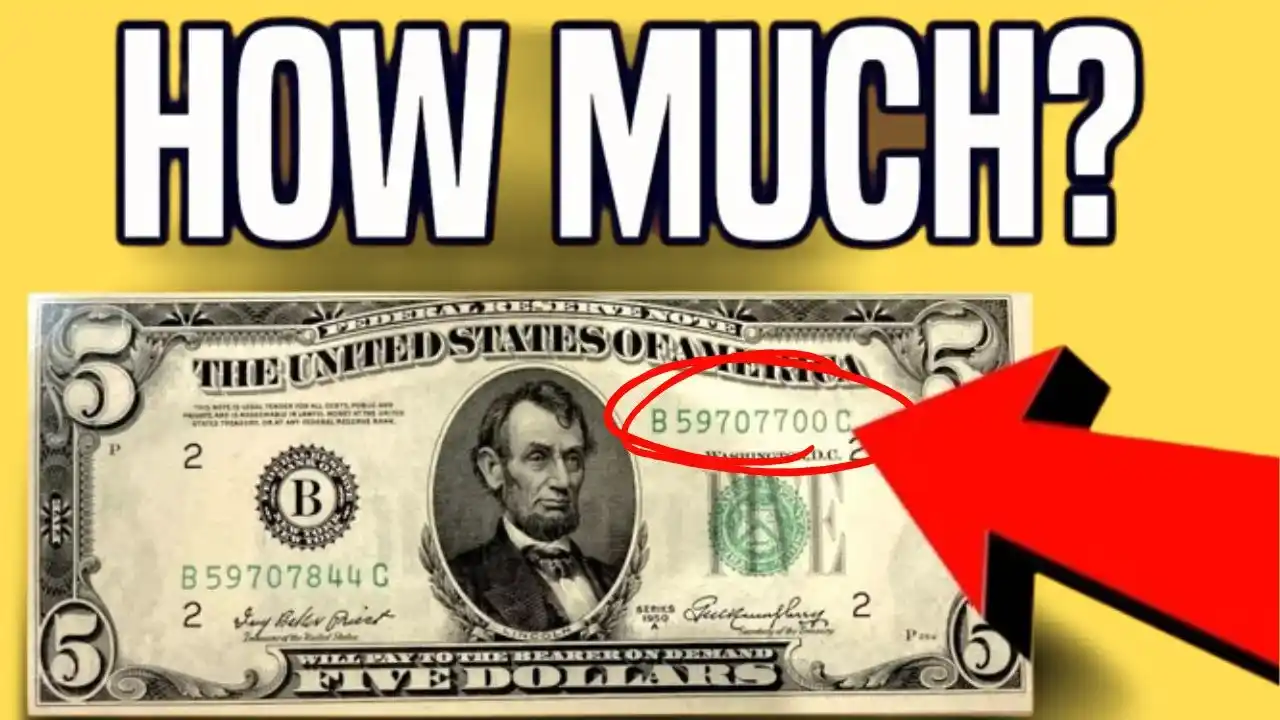Check Your $5 Bills Rare $5 Bill With Mismatched Serial Numbers Sells for $71,000 in the U.S. Most people don’t pay much attention to the little notes in their wallets—especially five dollar bills—thinking they’re worth just their face value. But sometimes, one of these ordinary notes turns out to be very valuable. That’s what happened recently when an ordinary five dollar bill sold for an incredible $71,000. What was the reason behind this staggering price? Its serial numbers were mismatched—a rare printing defect that drives serious currency collectors crazy.
What are serial numbers on paper notes?
Every banknote issued by the U.S. government has a unique serial number that serves as its individual identification. You’ll find this number printed in two places—usually in the upper right and lower left corners. Under normal circumstances, these numbers are the same. They help track, verify, and authenticate the note. If these numbers don’t match, it’s a sign of a printing error—and in the world of collectors, such rare mistakes can turn an ordinary note into a valuable treasure.
Table: Quick Comparison – Regular $5 vs. Mismatched Serial Number $5
| Feature | Regular $5 Bill | Mismatched Serial Number $5 |
|---|---|---|
| Serial Numbers Match | Yes | No |
| Value | $5 | Up to $71,000 or more |
| Rarity | Common | Extremely rare |
| Collectible Worth | Low | Very high |
| Error Type | None | Printing error |
The Story of the $71,000 $5 Note
In this case, the highlight of the show was a 2016-series $5 note that bore two completely different serial numbers—one on each side. Under normal circumstances, such an error would have been flagged and destroyed during strict quality control at the printing center. But this note somehow went undetected and quietly entered circulation. Years later, a sharp-eyed collector noticed the mismatch and realized its potential value. After being submitted to a professional currency grading service and confirmed for authenticity, the note was put up for auction—where it stunned everyone by fetching an incredible price of $71,000.
Why are mismatched serial numbers so rare?
The U.S. currency printing process is extremely precise and carefully monitored. Special machines are calibrated so that every detail, from the amount of ink to the serial numbers, is completely accurate. On rare occasions, a mechanical glitch or human error can result in notes with mismatched serial numbers. However, these flawed notes are almost always caught during inspection and destroyed before they leave the factory. Only a few notes enter circulation, and this extreme rarity is what makes them so valuable and so beloved among collectors.
How to Identify a Bill With Mismatching Serial Numbers
If you’re wondering if you’ve got a hidden gem hiding in your wallet, first look at the serial numbers on your bills. Carefully compare the two sets—which are usually in the upper right and lower left corners. These should be exactly the same, digit for digit. If even one number is different—or if the entire sequence isn’t the same—you may have a rare and valuable defective note. Of course, always have a bill checked by a reputable currency grading service, because there are counterfeit and altered notes, too.
Actual value: Much more than face value
Although it may have “$5” written in the corner, collectors don’t value a note solely by its printed value. Rather, its value is determined by its rarity, uniqueness, and hidden story. In this case, this note was no ordinary coin—it became a highly sought-after collectible that someone was willing to pay $71,000 for. Its unusual printing error, extreme rarity, and the fact that it quietly circulated for years before being discovered all combined to give it extraordinary value.
Should you check your $5 bills?
Absolutely. Although most bills leave the printing plant in flawless condition, rare mistakes like mismatched serial numbers can go unnoticed. A cursory examination of your money—especially older bills—could reveal an unexpected treasure. You don’t need any special training to get started; just a careful eye and a little curiosity. And if you notice something unusual, the smartest move is to have it verified by a trusted professional currency appraiser before making any decisions.
Final Thoughts: Hidden Wealth in Everyday Cash
Stories like these remind us that valuables can be hidden in the most ordinary places—even in your everyday money. While the chances of finding a rare, flawed note are low, they are not zero. That five dollar bill that has been in your wallet for years could be worth far more than its face value. So the next time you find change at the store, take a moment to look at it—you may hold the key to unexpected riches.
Q: Are mismatched serial numbers easy to find?
A: Not at all. They are extremely rare because the printing process uses rigorous checks to catch and destroy defective notes before they enter circulation.
Q: How can I check if my bill is a valuable defective note?
A: Compare the two serial numbers on your bill—usually in the upper right and lower left corners. If even one digit is different, set the bill aside and have it examined by a reputable currency expert or grading service.
Q: Can I sell a bill with a mismatched serial number?
A: Absolutely. Many collectors and auction houses are willing to pay substantial sums for certified defective notes, depending on rarity and condition.
